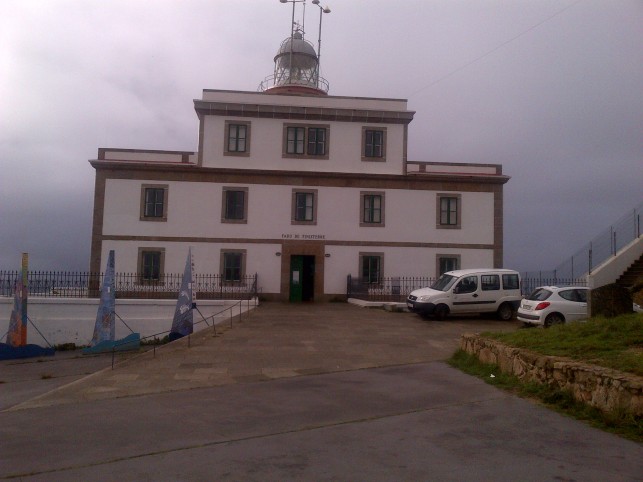Fisterra
Tuesday-Thursday, 9-11 October, 2012
When I set out on this walk from France, I had the intention of continuing from Santiago to Fisterra on the Atlantic. But the weather changed for the worst, and after three days of waiting for the torrential rain to ease, I decided that ‘discretion was the greater part of valour’, and I caught a bus for the last 90 km to Fisterra.
The Galician name Fisterra was derived from the Latin – finis terrae, meaning ‘end of the earth’. In Spanish it is known as Finisterre and in French, Finistère. For anyone who remembers the Shipping Forecast that used to precede the one o’clock news on BBC Radio One, Finisterre was one of the shipping areas.
Fisterra is in fact not the westernmost point of continental Europe; that honour lies in Portugal, with Cabo da Roca, which is about 16.5 km further west.
All the way to Fisterra the rain continued to pour down. Luckily there was a hotel just 100 m from the bus terminal, and I had no problem in getting a room, as there was only one other guest.
For the next twenty-four hours the rain did not cease and the street beside my hotel resembled an Amazonian river in full flood. At least I was dry and comfortable. I did not venture out that day.
In late morning of the next day the sky brightened and the sun shone, albeit only between heavy showers. I decided to set off for the short one hour walk to the Cape. Half-way there the sky suddenly darkened, and the rain fell in buckets. I sheltered successfully in a grove of trees until it passed.

The cape with its lighthouse was bleak, with a strong wind not encouraging hanging around for very long.

Far out in the Atlantic I spotted a large black blob, that I realised was a rain storm, and it was heading directly for the cape. I found a building behind which I could shelter and watched it approach. And for the next thirty minutes it lashed down and visibility was close to zero.
It is not surprising that the area is known as ‘La Costa da Morte‘. In 1596 twenty-five boats sank in a storm off the cape, with over 1700 drowned. Few years have ever gone by without a sinking, even in modern times.
But as suddenly as the squall hit and dissipated its energy, it gradually eased and visibility and the sun slowly came back.
I wandered back down to the village and a leisurely lunch with Caldo Gallego, a chunk of bread and a bottle of wine.

A perfect meal for a cold damp blustery day.
Delicious…
